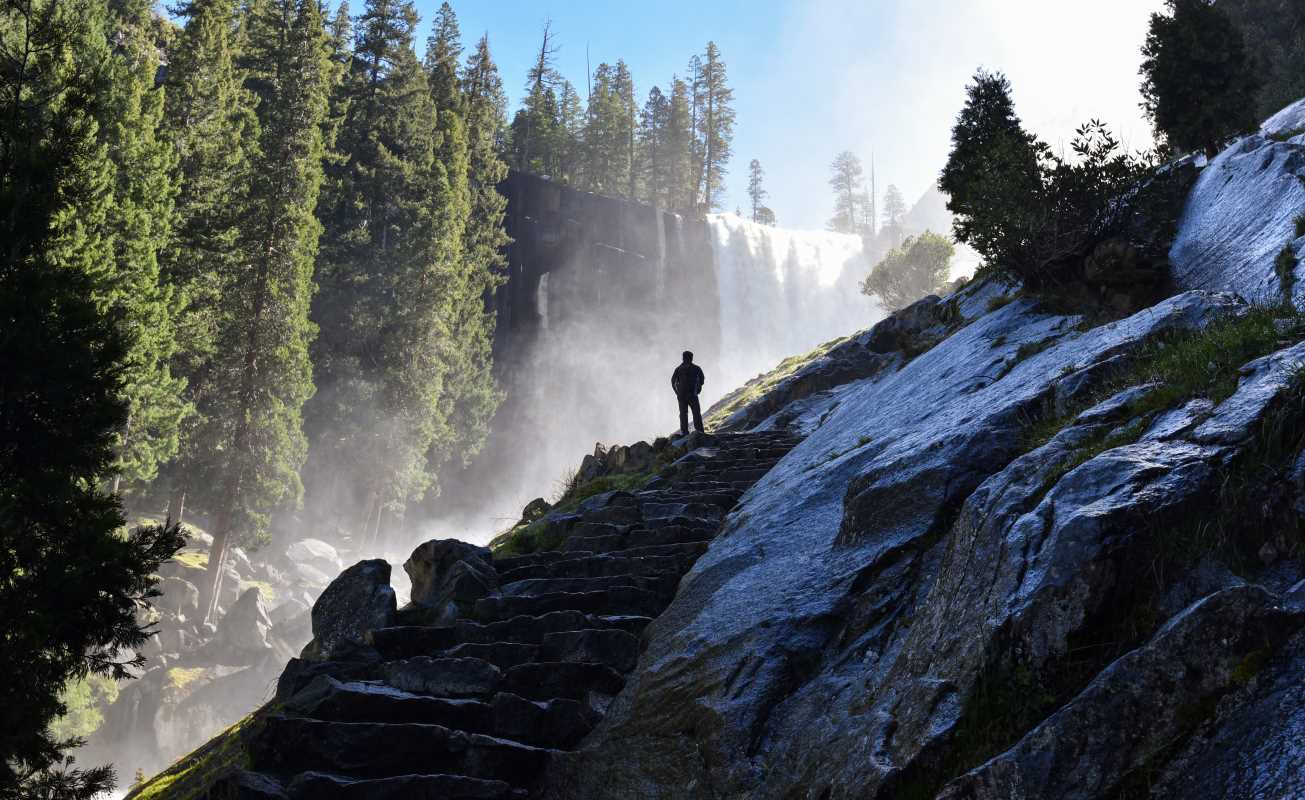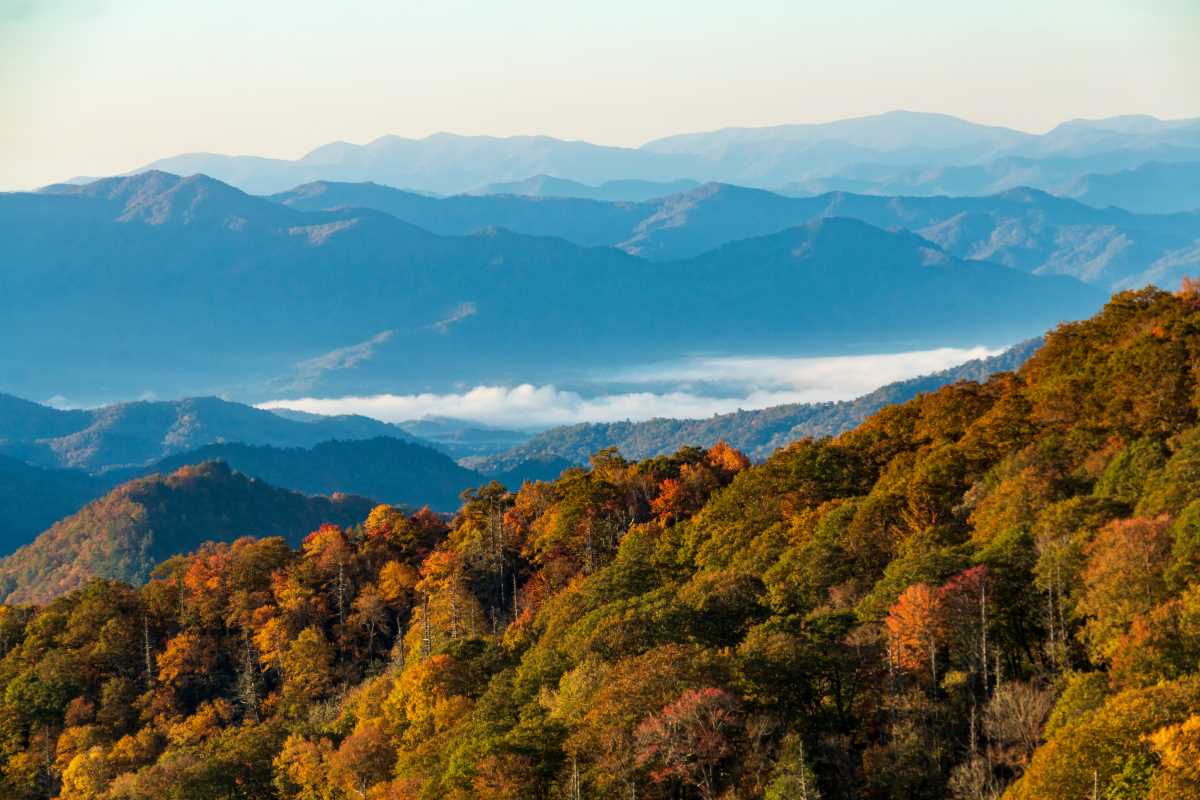The United States is home to an incredible array of national parks, each offering unique landscapes and a variety of hiking opportunities. Whether you're a novice hiker looking for leisurely trails or an experienced trekker seeking challenging terrain, there's something for everyone. Here's a guide to some of the best national parks for hikers, showcasing stunning vistas, diverse ecosystems, and unforgettable outdoor experiences.
1. Yosemite National Park, California
Iconic Trails
Yosemite National Park is a hiker's paradise, renowned for its breathtaking granite cliffs, majestic waterfalls, and ancient sequoias. The park offers over 750 miles of trails, ranging from easy strolls to strenuous climbs.
- Mist Trail: This iconic hike takes you to the top of Vernal Falls and Nevada Falls. The challenging ascent rewards you with stunning views and the refreshing mist from the waterfalls.
- Half Dome: For experienced hikers, the challenging Half Dome trail is a must. This 16-mile round trip involves a steep climb with cables that allow you to ascend the final stretch to the summit, offering panoramic views of the Sierra Nevada.
Tips for Hiking Yosemite
- Visit in the Shoulder Seasons: Spring and fall offer milder weather and fewer crowds, making for a more enjoyable hiking experience.
- Start Early: Popular trails can become crowded, especially in the summer. Starting early allows you to enjoy the trails before the rush.
2. Zion National Park, Utah
Diverse Hiking Options
Zion National Park features stunning red rock formations and canyons, making it a dream destination for hikers. The park offers a range of trails, from easy walks to adrenaline-pumping scrambles.
- Angels Landing: This iconic hike is not for the faint of heart. The 5-mile round trip trail features steep switchbacks and narrow ridges with sheer drop-offs, culminating in breathtaking views of Zion Canyon.
- The Narrows: A unique hiking experience, The Narrows involves wading through the Virgin River. This trail offers a refreshing adventure as you hike between towering canyon walls, with the water level varying depending on the season.
Tips for Hiking Zion
- Permits for Angels Landing: Since 2022, hikers must obtain a permit to hike Angels Landing. Be sure to secure your permit in advance to guarantee your spot.
- Stay Hydrated: The desert climate can be dry and hot, especially during summer. Carry plenty of water and wear appropriate clothing to stay comfortable.
3. Glacier National Park, Montana
Alpine Beauty
Glacier National Park is known for its stunning glaciers, alpine meadows, and diverse wildlife. With over 700 miles of trails, hikers can explore a variety of landscapes, from rugged mountains to serene lakes.
- Grinnell Glacier: This challenging hike rewards you with spectacular views of glaciers and turquoise lakes. The 11-mile round trip trail includes elevation gain, making it suitable for experienced hikers.
- Highline Trail: This iconic trail offers breathtaking views of the park's rugged terrain. The 11-mile hike traverses the Garden Wall, providing stunning panoramas of the surrounding mountains.
Tips for Hiking Glacier
- Check Trail Conditions: Many trails may be snow-covered or closed in early summer. Check conditions at the park’s visitor center before heading out.
- Wildlife Caution: Glacier is home to bears and other wildlife. Be sure to carry bear spray and follow safety guidelines when hiking.
4. Rocky Mountain National Park, Colorado
High-Altitude Adventures
Rocky Mountain National Park boasts stunning vistas, alpine lakes, and diverse ecosystems. With over 300 miles of trails, it’s a haven for hikers of all levels.
- Bear Lake Trail: This easy, accessible trail offers breathtaking views of the surrounding peaks and is perfect for families. The 0.6-mile loop around Bear Lake is an excellent introduction to the park's beauty.
- Longs Peak: For experienced hikers, the 14,259-foot Longs Peak presents a challenging adventure. The 15-mile round trip involves steep ascents and boulder fields, but the summit rewards climbers with stunning views.
Tips for Hiking Rocky Mountain National Park
- Acclimate to Altitude: The park’s high elevation can affect newcomers. Spend time at lower elevations before tackling high-altitude hikes.
- Weather Awareness: Weather in the Rockies can change rapidly. Be prepared for sudden storms, and always check forecasts before heading out.
5. Acadia National Park, Maine
Coastal Wonders
Acadia National Park is renowned for its stunning coastal landscapes, granite peaks, and vibrant fall foliage. With over 120 miles of trails, it offers diverse hiking experiences.
- Cadillac Mountain: As the highest point on the East Coast, the Cadillac Mountain summit trail provides breathtaking views of the surrounding islands and the Atlantic Ocean. The 7-mile round trip is suitable for hikers of various skill levels.
- Precipice Trail: For those seeking a thrill, the Precipice Trail features iron rungs and ladders as you climb the steep cliffs. The trail offers panoramic views of the coastline and is best suited for experienced hikers.
Tips for Hiking Acadia
- Visit in the Off-Season: While summer is popular, visiting in late spring or early fall allows you to enjoy the park without the crowds.
- Plan for Tides: Some coastal trails can be affected by tides. Check tide schedules to ensure safe hiking along the shoreline.
6. Joshua Tree National Park, California
Unique Desert Landscapes
Joshua Tree National Park is famous for its otherworldly landscapes, featuring iconic Joshua trees and striking rock formations. The park offers a variety of trails for hikers of all levels.
- Hidden Valley: This 1-mile loop trail takes you through a stunning rock formation and offers opportunities for rock climbing. It’s perfect for families and those looking for a shorter hike.
- Ryan Mountain: For a more challenging hike, the 3-mile round trip to Ryan Mountain rewards you with panoramic views of the park’s desert landscape and the San Andreas Fault.
Tips for Hiking Joshua Tree
- Hike Early or Late: Temperatures can soar during the day, especially in summer. Plan hikes for early morning or late afternoon to avoid the heat.
- Stay Hydrated: The desert climate can be dehydrating. Always carry plenty of water and snacks on your hikes.
7. Grand Canyon National Park, Arizona
Majestic Vistas
The Grand Canyon is one of the most awe-inspiring natural wonders in the world, offering numerous hiking opportunities. The park features over 400 miles of trails that provide stunning views and diverse ecosystems.
- South Rim Trail: This relatively easy, mostly flat trail spans about 13 miles along the rim of the canyon, providing breathtaking vistas at various viewpoints. You can choose shorter sections for a more leisurely hike.
- Bright Angel Trail: This iconic trail descends into the canyon, offering a challenging hike with stunning views. The 9.5-mile round trip to Plateau Point provides access to the Colorado River and breathtaking perspectives of the canyon.
Tips for Hiking the Grand Canyon
- Start Early: The canyon can get extremely hot, especially in summer. Starting your hike early in the morning helps you avoid the heat and enjoy cooler temperatures.
- Know Your Limits: If hiking to the canyon’s floor, be aware of the strenuous nature of the trails. Ensure you have plenty of water and snacks, and don’t attempt to hike down and back up in one day unless you’re experienced and well-prepared.
8. Olympic National Park, Washington
Diverse Ecosystems
Olympic National Park offers a remarkable diversity of ecosystems, from lush rainforests to rugged coastlines and alpine mountains. The park features over 600 miles of trails, making it a hiker’s dream.
- Hoh Rain Forest Trail: This easy 3-mile loop takes you through one of the park’s lush rainforests, showcasing towering trees and diverse plant life. It’s a fantastic way to experience the unique ecosystem of the Pacific Northwest.
- Hurricane Ridge: For stunning mountain vistas, the Hurricane Ridge area offers several trails, including the popular 1.5-mile round trip to the Hurricane Hill viewpoint. The breathtaking views of the Olympic Mountains and the Strait of Juan de Fuca make it worth the hike.
Tips for Hiking Olympic National Park
- Check Weather Conditions: The weather can vary dramatically in different areas of the park. Be prepared for rain, especially in the rainforest areas, and pack accordingly.
- Wildlife Safety: Keep an eye out for wildlife, including bears and elk. Follow safety guidelines to ensure a safe hiking experience.
America's national parks offer some of the best hiking experiences in the world, each showcasing its unique beauty and landscapes. From the towering granite cliffs of Yosemite to the stunning coastal views of Acadia, there’s no shortage of breathtaking trails to explore. Whether you’re seeking leisurely walks or challenging climbs, these national parks provide countless opportunities to connect with nature and experience the great outdoors. So, lace up your hiking boots, pack your gear, and get ready for an unforgettable adventure in some of the most scenic areas of the country!







